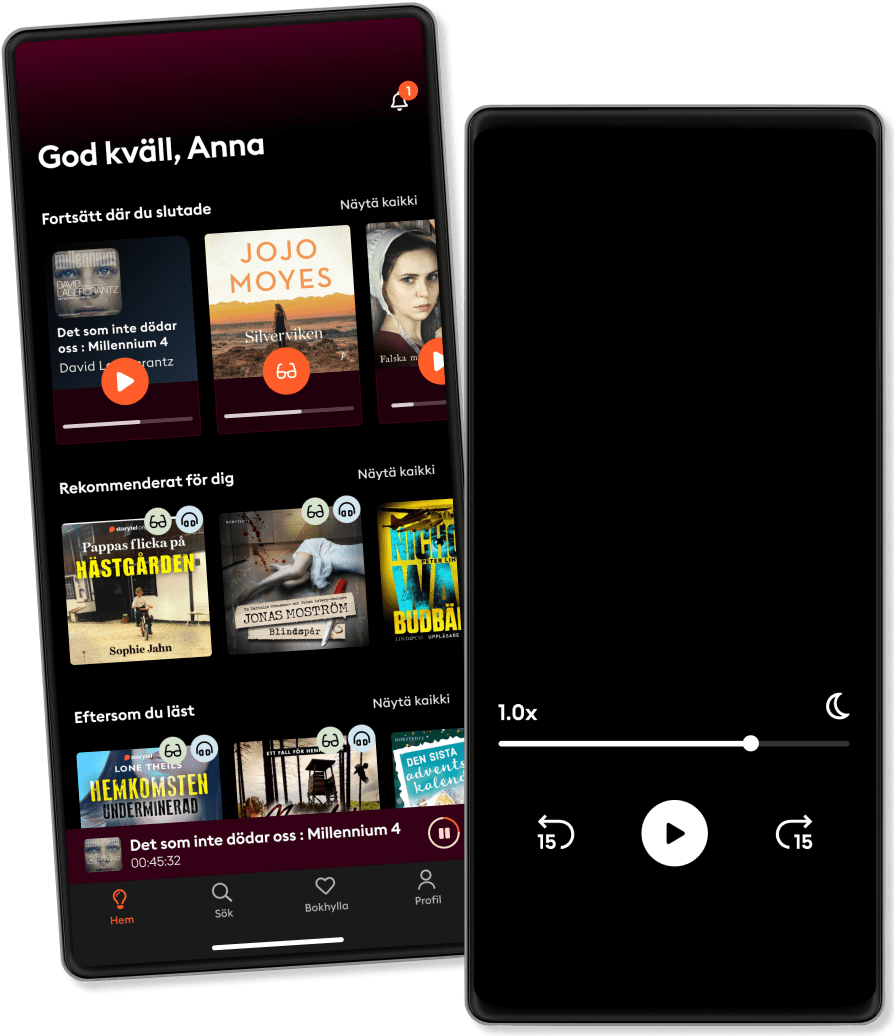ฟังและอ่าน
ก้าวเข้าสู่โลกแห่งเรื่องราวอันไม่มีที่สิ้นสุด
- อ่านและฟังได้มากเท่าที่คุณต้องการ
- มากกว่า 1 ล้านชื่อ
- Storytel Originals ผลงานเฉพาะบน Storytel
- 199บ./ด.
- ยกเลิกได้ทุกเมื่อ

Egon Schiele and artworks
- ภาษา
- ภาษาอังกฤษ
- Format
- หมวดหมู่
ประวัติศาสตร์
Egon Schiele’s work is so distinctive that it resists categorisation. Admitted to the Vienna Academy of Fine Arts at just sixteen, he was an extraordinarily precocious artist, whose consummate skill in the manipulation of line, above all, lent a taut expressivity to all his work. Profoundly convinced of his own significance as an artist, Schiele achieved more in his abruptly curtailed youth than many other artists achieved in a full lifetime. His roots were in the Jugendstil of the Viennese Secession movement. Like a whole generation, he came under the overwhelming influence of Vienna’s most charismatic and celebrated artist, Gustav Klimt. In turn, Klimt recognised Schiele’s outstanding talent and supported the young artist, who within just a couple of years, was already breaking away from his mentor’s decorative sensuality. Beginning with an intense period of creativity around 1910, Schiele embarked on an unflinching exposé of the human form – not the least his own – so penetrating that it is clear he was examining an anatomy more psychological, spiritual and emotional than physical. He painted many townscapes, landscapes, formal portraits and allegorical subjects, but it was his extremely candid works on paper, which are sometimes overtly erotic, together with his penchant for using under-age models that made Schiele vulnerable to censorious morality. In 1912, he was imprisoned on suspicion of a series of offences including kidnapping, rape and public immorality. The most serious charges (all but that of public immorality) were dropped, but Schiele spent around three despairing weeks in prison. Expressionist circles in Germany gave a lukewarm reception to Schiele’s work. His compatriot, Kokoschka, fared much better there. While he admired the Munich artists of Der Blaue Reiter, for example, they rebuffed him. Later, during the First World War, his work became better known and in 1916 he was featured in an issue of the left-wing, Berlin-based Expressionist magazine Die Aktion. Schiele was an acquired taste. From an early stage he was regarded as a genius. This won him the support of a small group of long-suffering collectors and admirers but, nonetheless, for several years of his life his finances were precarious. He was often in debt and sometimes he was forced to use cheap materials, painting on brown wrapping paper or cardboard instead of artists’ paper or canvas. It was only in 1918 that he enjoyed his first substantial public success in Vienna. Tragically, a short time later, he and his wife Edith were struck down by the massive influenza epidemic of 1918 that had just killed Klimt and millions of other victims, and they died within days of one another. Schiele was just twenty-eight years old.
© 2024 Parkstone International (อีบุ๊ก ): 9781781608678
วันที่วางจำหน่าย
อีบุ๊ก : 5 มิถุนายน 2567
แท็ก
คนอื่นก็สนุก...
- Egon Schiele Esther Selsdon
- Schiele Stéphanie Angoh
- Hieronymus Bosch and artworks Virginia Pitts Rembert
- Expressionism Ashley Bassie
- Art History The Viennese Secession Victoria Charles
- Klimt Jane Rogoyska
- Hieronymus Bosch Virginia Pitts Rembert
- Impressionism Nathalia Brodskaïa
- Art History Expressionism Ashley Bassie
- Art Nouveau 120 illustrations Jean Lahor
- Atomic Habits เพราะชีวิตดีได้กว่าที่เป็น James Clear (เจมส์ เคลียร์)
4.9
- พ่อรวยสอนลูก : Rich Dad Poor Dad Robert T. Kiyosaki
4.9
- Real Alpha 1 Chiffon_cake
4.9
- AA01 นอนเยอะแต่ยังง่วง? เผยเคล็ดลับการนอนหลับให้มีคุณภาพ เพิ่มความสดชื่น THE STANDARD
4.7
- The Whys of Life ชีวิตต้องสงสัย ณัฐวุฒิ เผ่าทวี
4.6
- ไพรมหากาฬ เล่ม 1 พนมเทียน
4.8
- Fourth Wing (1 of 2) [Dramatized Adaptation]: The Empyrean 1 Rebecca Yarros
4.7
- Fourth Wing (2 of 2) [Dramatized Adaptation]: The Empyrean 1 Rebecca Yarros
4.8
- The Why Café คาเฟ่สำหรับคนหลงทาง John P. Strelecky
4.6
- Fourth Wing Rebecca Yarros
4.6
- ไพรมหากาฬ เล่ม 2 พนมเทียน
4.6
- เพราะเราคู่กัน 1 JittiRain
4.8
- นิทานคนรวย เปี่ยมศักดิ์ คุณากรประทีป
4.6
- บทกวีของปีแสง JittiRain
4.8
- ราชาวิหค ชุด สิบสองเศร้า Chiffon_cake
4.9
ทุกที่ ทุกเวลากับ Storytel:
กว่า 500 000 รายการ
Kids Mode (เนื้อหาที่ปลอดภัยสำหรับเด็ก)
ดาวน์โหลดหนังสือสำหรับการเข้าถึงแบบออฟไลน์
ยกเลิกได้ตลอดเวลา
ภาษาไทย
ประเทศไทย